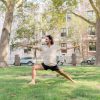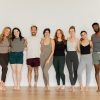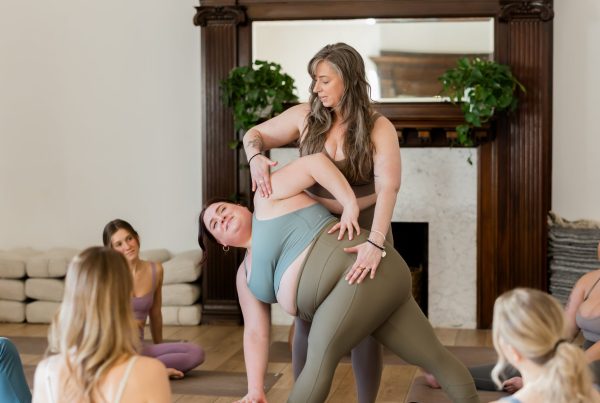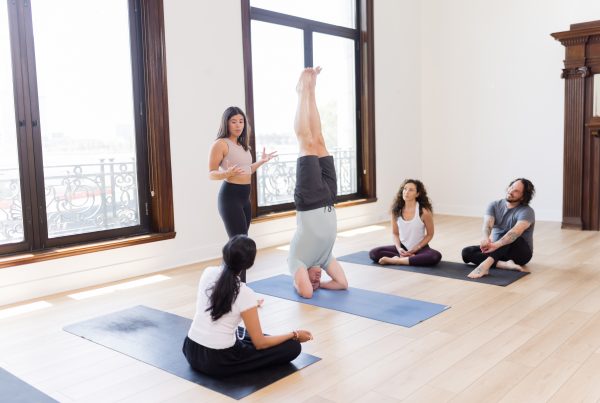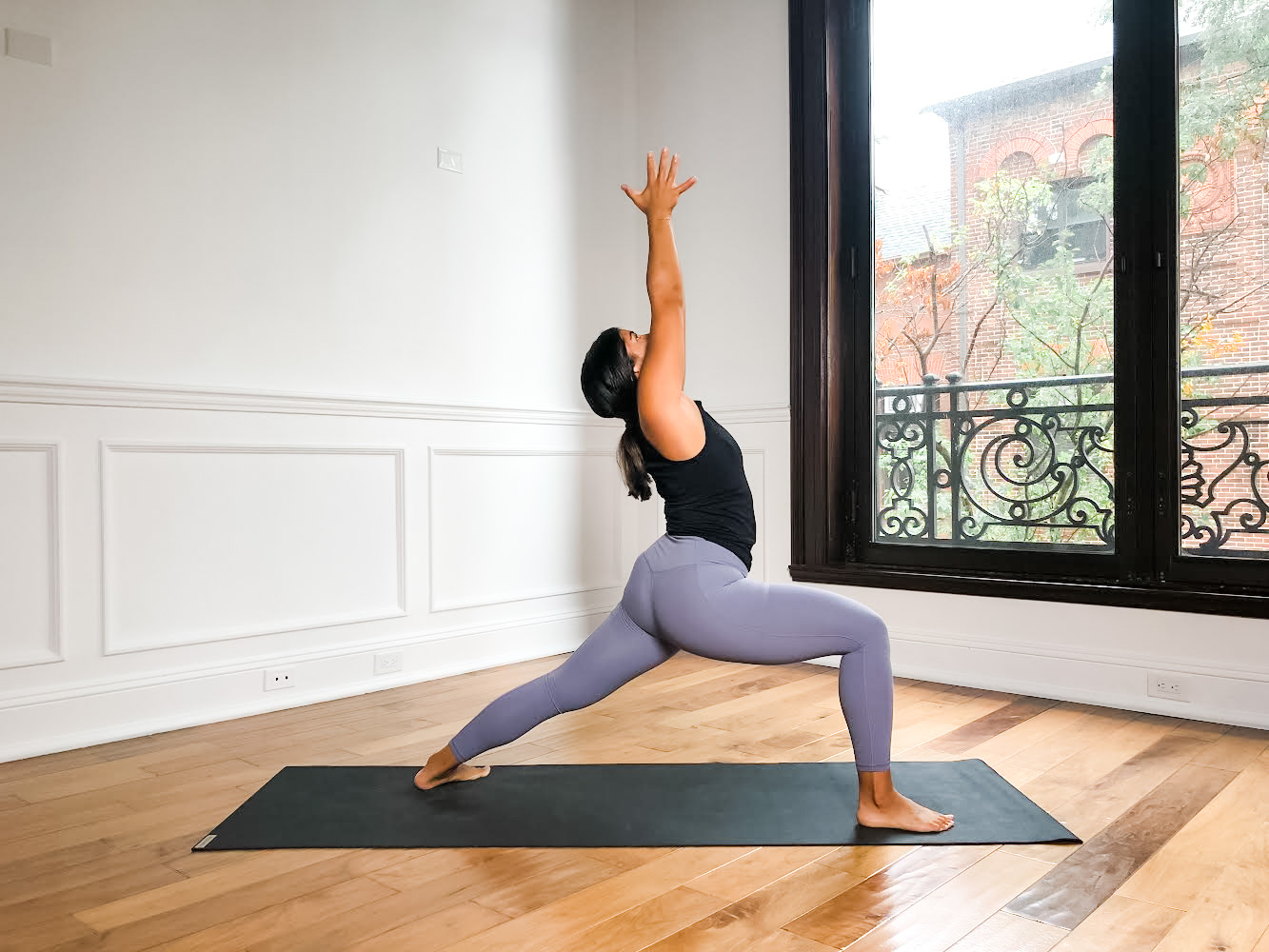
Being immersed in the holiday spirit makes it a wonderful time to focus on the driving force behind it all: gratitude.
But, what exactly is gratitude and how do we bring gratitude effectively into our lives on a regular basis?
Gratitude comes from the latin root word “gratus,” which means “pleasing” or “thankful.” Gratitude is a high frequency emotion, so when it is the main emotion present, lower frequency emotions such as: anger, resentment, or jealousy don’t have as much room to shine… if any at all.
When gratitude is tied simply to each present moment as opposed to being tied to attachments such as material items, life becomes a wild, beautiful ride. When we learn to be grateful not only for the categorically good things we have in our lives, but also the challenges we face and the pain that teaches us lessons, life itself becomes a reason in itself to express gratitude.
It is possible to live everyday with gratitude. We don’t need a particular day, although a particular day can indeed catalyze one’s journey!
✨ Mini practice for gratitude: Try to sit in meditation for 5-10 minutes focusing on the emotion of gratitude. Try to open your heart to the actual feeling of gratitude. You might use past experiences or imagine what gratitude would feel like in your body. Repeat this daily! (and of course, you can use your mat as an invitation to put yourself in such a state through your body and mind).
Peak Pose: Warrior I (Virabhadrasana I)
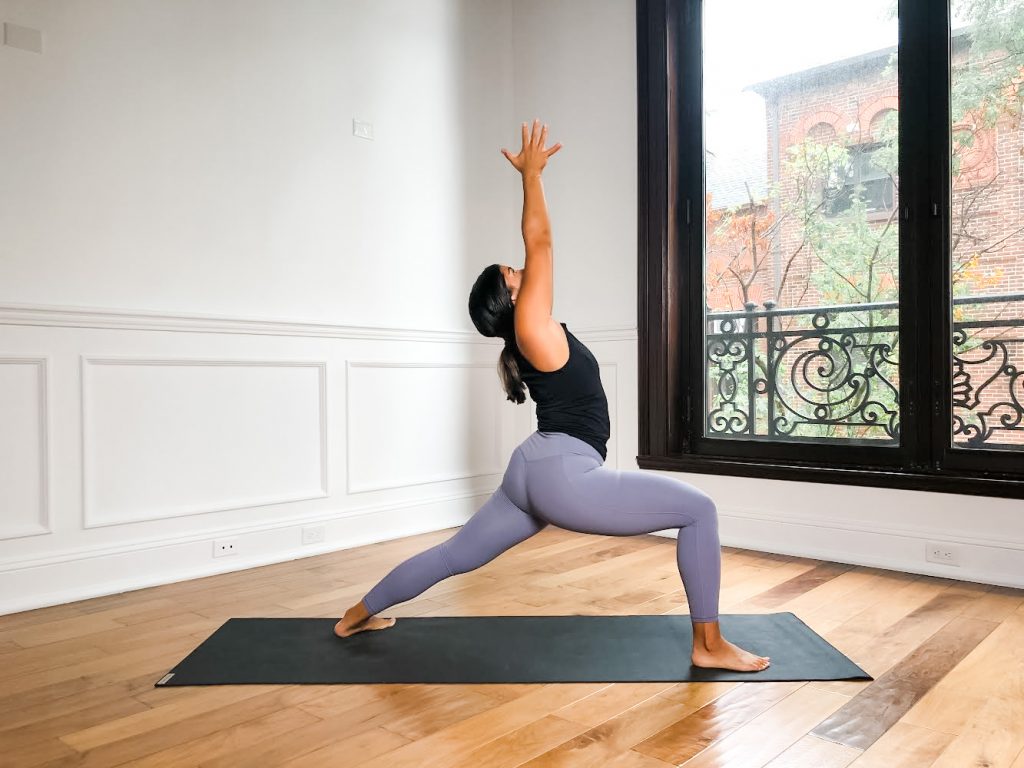
Whenever I take class with my teacher, Julie, at the Bhakti Center in NYC we chant the Maha Mantra when we get into Warrior I. We open our hearts towards the ceiling, reach the hands up like the hands are either an extension of or a conduit of the heart, and offer our chant up to the divine Krishna. The only way to adequately offer ourselves up to the higher entity is if we are offering from a full cup. A full cup comes from love, which I believe gratitude is the precursor for.
Supporting Pose 1: Crescent Lunge (Anjaneyasana)
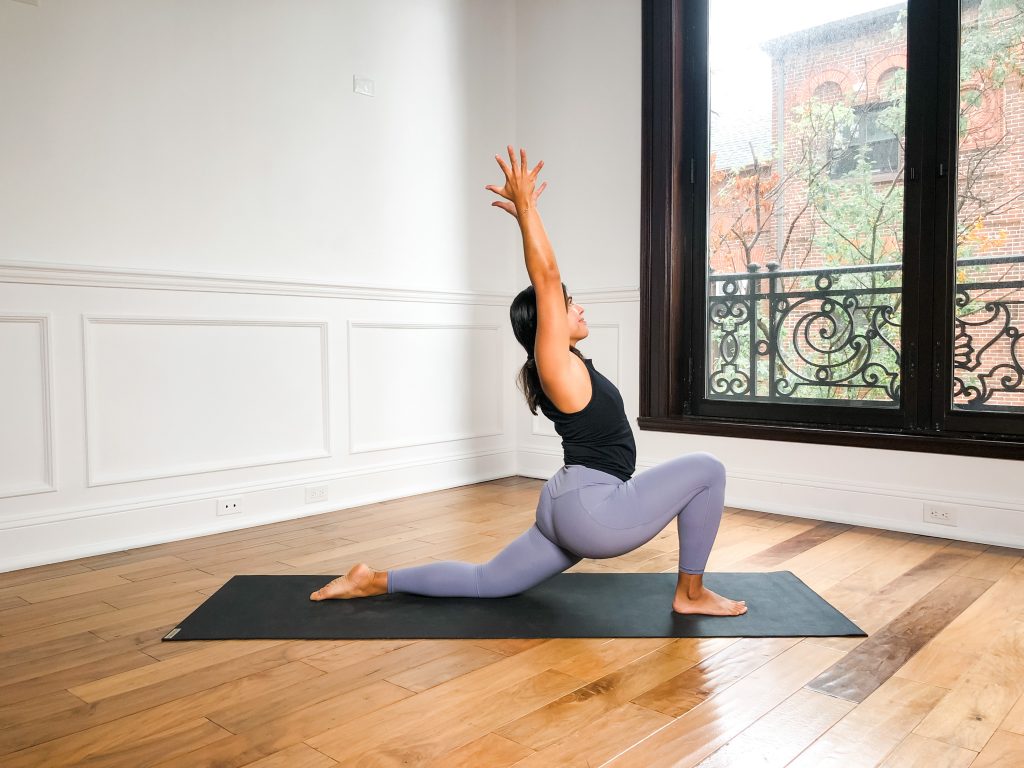
Don’t these poses look similar? Crescent lunge will teach the action of the front leg, the opening of the back frontal hip, and the actions of the torso.
How to:
- From low lunge, bring your back knee down to the floor and flatten the top of your foot to the mat.
- Press your sacrum forward as you reach your hands up to the sky to frame your head.
- Draw your shoulder blades towards one another to reach the center of the chest forward and up. Ensure the front of your rib basket is not excessively jutting forward by firming the front ribs in.
Supporting Pose 2: Warrior II (Virabhadrasana II)
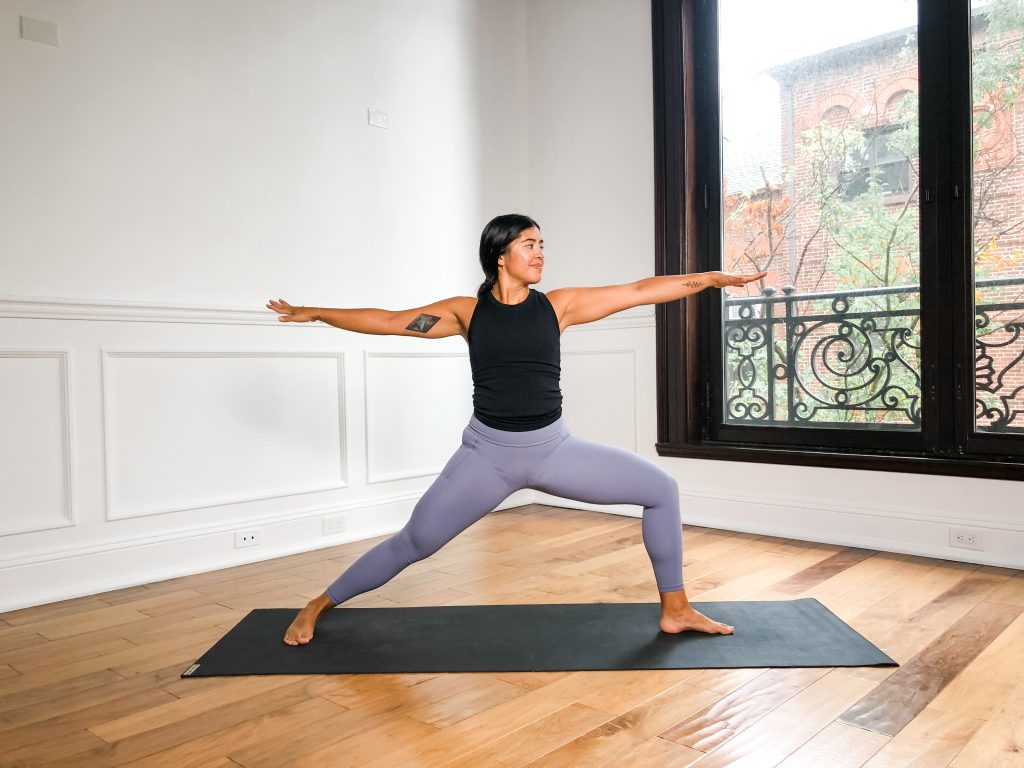
If there were two poses that were siblings, I think it would be Warrior I and Warrior II. They are good teachers for one another as they have similar, yet slightly different characteristics. This is an open hip posture (hips open to side) while Warrior I is a closed hip posture (hips face forward). The good thing about Warrior II, is that because it is an open hip pose it is *generally* a bit more accessible compared to Warrior I and so can act as a great teacher.
How to:
- From downward facing dog, step the right foot between your hands.
- Spin the left heel down so it’s more or less parallel to the short side of your mat. Slightly turned in is okay too to encourage internal rotation of the back thigh.
- Keeping the front leg bent at an ideal* 90 degrees and your back leg straight, bring the torso upright and ensure the hips, belly button, and chest are facing the side wall. Sometimes the back hip will creep forward so press the left thigh and left side of the pelvis towards the opposite side wall that your back is to.
- Ensure all four corners of both feet are planted as you spread your arms into a T-shape at shoulder height and look over your right middle finger. Note: the left side is pictured.
Supporting Pose 3: Warrior III
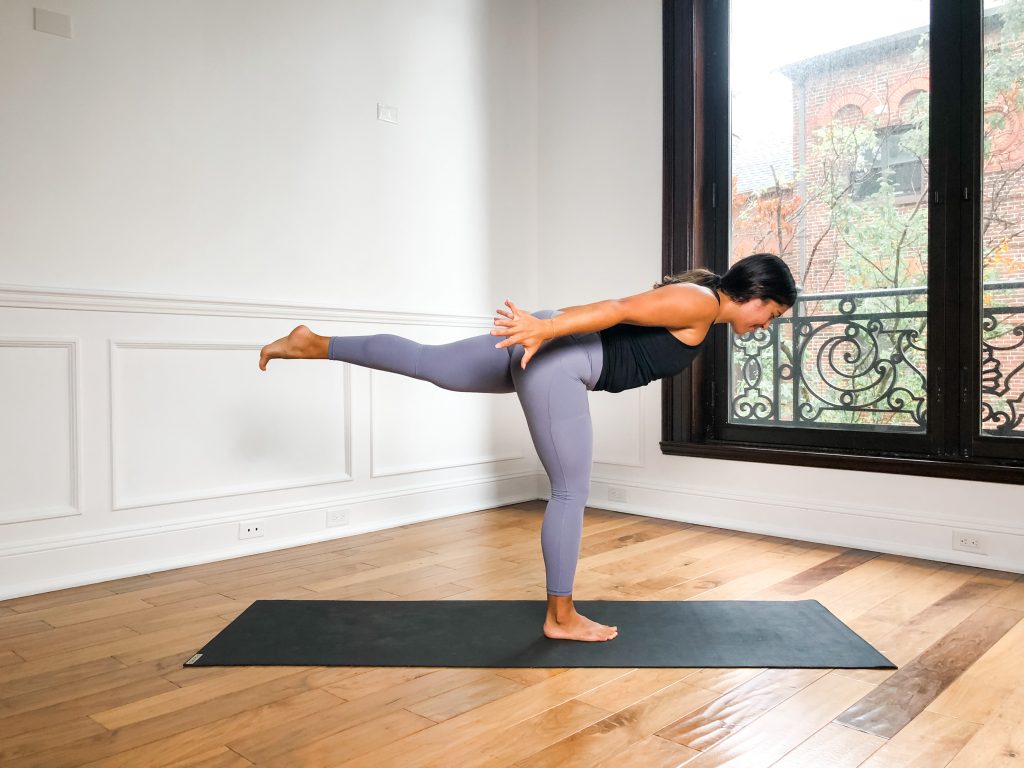
All the warriors are here today! Warrior III is a great prep pose for warrior I. It moves the body in the same place as warrior I, can teach the energy needed for the back leg to firm the thigh, and can teach proper actions for the hips and chest.
How to:
- From high lunge, hinge the torso forward at the hip.
- Take the weight onto the front leg as you lift the back leg off the floor.
- Flex and spread the back toes as you energize the back leg up and in line with the pelvis.
- Compact your hips in as your reach your chest and head forward. Ensure the front of the rib basket isn’t falling to the floor unconsciously. Pull the front ribs in to fill the lower back.
- Arms can be in any variation so long as there is consciousness to the integrity of the upper back. Arms reaching forward and framing the ears might better mirror warrior III or you might want arms by the side to give them a rest in preparation for warrior III.
Warrior I (Virabhadrasana I)
How to:
- From downward facing dog, step the right foot behind the right wrist.
- Spin the left heel down at about 45 degrees.
- With the right leg bent at about 90 degrees* and the left leg straight, bring the torso upright. *Not everyone’s body will reach the full 90 degrees, and that’s okay!
- Ensure all four corners of both feet are planted as you reach your hands up to the sky. Bring your hands together or have them shoulder distance apart.
- Draw your shoulder blades towards one another and press your sacrum forward as you press your heart up towards the sky.
- Gaze to or between your hands and maybe chant the Maha Mantra.
The Maha Mantra: Hare Krishna Hare Krishna, Krishna Krishna, Hare Hare, Hare Rama Hare Rama, Rama Rama, Hare Hare!


